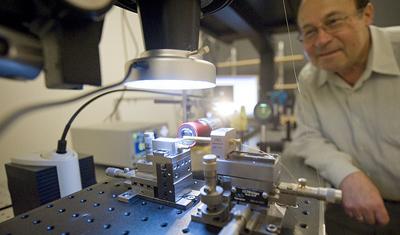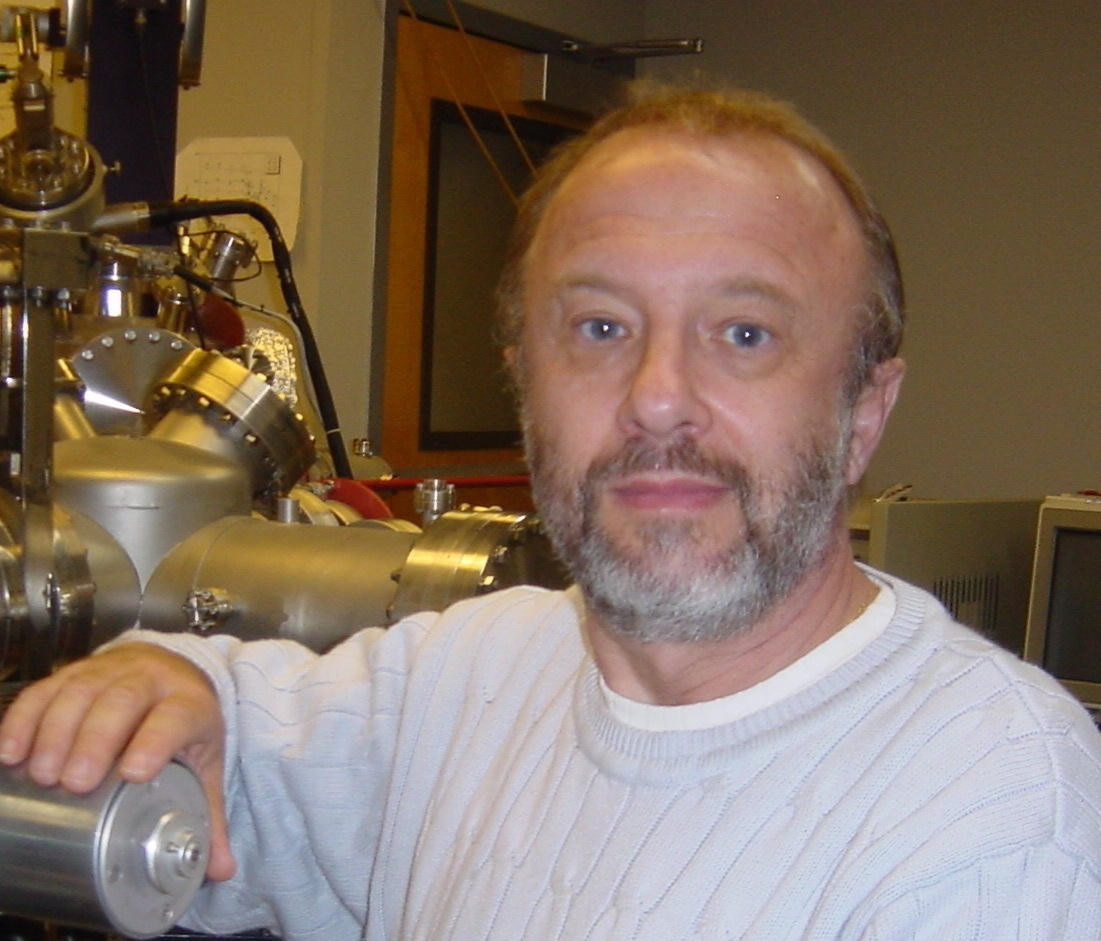UC San Diego Wins Three MURI Awards from DoD
San Diego, Aug. 20, 2013 -- UC San Diego faculty members have garnered three of 15 Multidisciplinary University Research Initiative (MURI) awards granted by the Department of Defense this year, and researchers affiliated with Calit2’s Qualcomm Institute are among the award winners.
|
“Our faculty’s success in winning these competitive awards stems from our long history of multidisciplinary work and our strength in establishing effective collaborations across our campus and nation,” said UC San Diego Chancellor Pradeep K. Khosla.
The grants, worth up to $21 million in aggregate, will go to multi-institutional teams.
Shaya Fainman, professor and chair of the Eectrical and Computer Engineering department in the Jacobs School of Engineering, is leading one of the efforts: "Near-Field Nanophotonics for Energy Efficient Computing and Communication (NECom)." Fainman is affiliated with the Qualcomm Institute and is deputy director of the NSF-funded Center for Integrated Access Networks (CIAN). CIAN director Nasser Peyghambarian at the University of Arizona is a co-PI on the new MURI, along with faculty from UCLA (Bahram Jalali) and UC Berkeley (Xiang Zhang).
|
Nanophotonics
Professor Fainman’s Ultrafast and Nanoscale Optics research group has helped to develop the field of nanophotonics to generate, manipulate and control light at the nanoscale. By integrating nanophotonic devices into lightwave circuits and systems, researchers have already achieved enormous success over the past decades in digital and analog signal and information processing.
Going forward in their new NECom MURI, Fainman and his colleagues will use computational design and nanofabrication to discover nonlinear optical metamaterials and novel low-energy nanoscale resonant devices for next-generation, optical communication, networking, and sensing on a chip side-by-side with CMOS electronics.
The nanophotonic technology is expected to enable and revolutionize various information system applications, including large data centers, cloud computing, advanced radar technology, as well as medical devices and systems.
Ocean Situational Awareness
A second MURI announced today went to a group led by William Kuperman, professor and director of the Marine Physical Laboratory (MPL) in the Scripps Institution of Oceanography. The co-PIs on the "Information Content of Ocean Noise: Theory and Experiment" MURI include MPL member William Hodgkiss, who is a former Associate Director of, and continues to be affiliated with, Calit2’s UC San Diego division, now known as the Qualcomm Institute. Hodgkiss, Kuperman, two other UCSD researchers and colleagues from Duke, Georgia Tech MIT and Portland State University will monitor sounds in the ocean to understand if and how those sounds can be used as a tool for analysis of ocean conditions. The scientists will study the noise from ships off the coast of California and the noise made by ice floes in polar regions to see if they can produce scientifically valuable data even when the sound sources cannot be controlled, a task that principal investigator Kuperman described as an extremely difficult challenge in the field of tomographic imaging. The research is laying the foundation for developing a reliable, passive means of enhancing ocean situational awareness, an important component for carrying out U.S. Navy missions, Kuperman added.
Synthetic Cells
The third MURI is called "Dynamic Artificial Cells Composed of Synthetic Biorthogonal Membranes." It is led by Neal Devaraj, assistant professor of chemistry and biochemistry in the Division of Physical Sciences. The team includes one bioengineering professor who is also affiliated with the Qualcomm Institute: Jeff Hasty. The project (including faculty from Harvard and the University of Colorado) will combine synthetic materials with biological elements in order to create hybrid artificial cells that mimic the form and function of natural cells. By replacing organizing elements of the cell with artificial constructs, they hope to gain fine control of actions within the cell, then explore the consequences of their manipulations. Devaraj believes their effort will lead to breakthroughs in understanding how to develop and control a wholly synthetic biological “chassis” capable of interfacing with engineered biological systems. In the end, their approach should lead to advanced synthetic cells, which could optimize the production of biochemicals that are useful as drugs or fuels, or that can be assembled along with biological circuits to create highly efficient sensors.
|
Previous MURI awards to Calit2-affiliated faculty at UC San Diego included a project on "nanostructured supersensors." In 2002, UC San Diego physics professor Ivan Schuller led the MURI basic research program with impressive results. At the project's conclusion in 2007, Schuller – who was Calit2’s layer leader for materials and devices at UCSD at the time – pointed to 16 patents filed and disclosed, four licenses, three Small Business Innovation Research (SBIR) awards, and two venture capital-backed startup companies, RedXDefense and Rhevision Technology. All came out of the nanostructured supersensors MURI.
A 2004-2009 MURI project led by ECE professor James Ziegler focused on “space-time processing for mobile, ad-hoc networks.” Other Calit2-affiliated faculty on the project included ECE professors Tara Javidi, Laurence Milstein, Bhaskar Rao, the late Rene Cruz, and Hamid Jafarkhani (the latter from Calit2’s UC Irvine division).
“Innovative thinking and creative partnerships are the hallmarks of our university’s research enterprise,” said Vice Chancellor for Research Sandra A. Brown, reacting to the news that UC San Diego principal investigators received three of the 15 MURIs awarded this year by DoD. “This impressive award validates the bold approach of these and other faculty members and researchers.”
Media Contacts
Susan Brown, 858-246-0161, sdbrown@ucsd.edu and Doug Ramsey, 858-822-5825, dramsey@ucsd.edu



.jpg)
